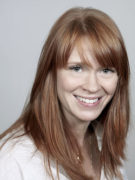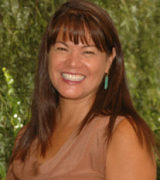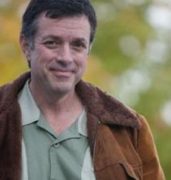Stories about Bodies: Narrative Medicine with Emily Rapp Black, Juliet McMullin, & Phillip Mitchell
Emily Rapp Black is the author of Poster Child: A Memoir (Bloomsbury USA, 2007), and The Still Point of the Turning World (The Penguin Press, 2013), which was a New York Times Bestseller and Editor’s Pick, and a finalist for the PEN USA Prize in Nonfiction. Her work has appeared in numerous noteworthy publications such as Vogue and the Los Angeles Times. Since 2012 she has been a literary correspondent for the Boston Globe. Her work has been widely anthologized, most recently in The Story Within: Essays on Ethics and Identity. She is currently a professor of creative writing in the University of California-Riverside’s Palm Desert MFA program in writing and the performing arts.
Juliet McMullin is a cultural and medical anthropologist. Her manuscript, which is in progress, is an ethnography of the graphic medicine community and explores how storytelling about illness in graphic form creates an ideological and material network of support. She has published two books: The Healthy Ancestor: Embodied Inequalities and the Revitalization of Native Hawaiian Health (2010) and an edited volume Confronting Cancer: Metaphors, Advocacy, and Anthropology (2009). Her latest and upcoming articles, respectively, are “Cancer and the Comics: Graphic Narratives and Biolegitimate Lives” (2016) and “Zombie Toxins: Abjection and Cancer’s Chemicals.” She is currently faculty at University of California Riverside’s School of Medicine.
Phillip Mitchell is an educator, communicator, storyteller, actor, and life-long learner. As an actor he has facilitated and performed in trainings since 2006. Through the company he founded, NarrativeCare, he develops and delivers continuing education that deepens caring relationships through the power of story, and he facilitates narrative medicine workshops for allied health professionals. He is also adjunct faculty at Antioch University, Seattle and holds a master of science in narrative medicine from Columbia University.
Katy Avila interviewed Black, McMullin, and Mitchell separately via phone calls and videoconferencing in February 2016. This piece is a combination of their interviews.
* * *
Katy Avila: How did you all become involved with narrative medicine?
Philip Mitchell: I first heard of narrative medicine in 2012. I was working full-time in pursuit [of becoming] an actor in Seattle with a company that used actors for medical training, in simulations, sort of like standardized patients. We were working on a program around medical error disclosure, and apparently I’d been talking about it with everyone, because one of my directors [on another project] told me about the program at Columbia called “narrative medicine.”
KA: Does it kind of seem like a term or field that is trying to describe something that was already happening in literature?
Emily Rapp Black: Absolutely. I think it’s just another way of talking about books, about life experiences. As more fields have become interested in issues like this, I think they just found a different way of talking about them. My first book was classified as a medical narrative.
Juliet McMullin: When I first read the LA Times’s book review on Brian Fies’s Mom’s Cancer (2005), as a cultural anthropologist I was so intrigued. I think it is a big part of the field: storytelling, hearing people’s stories, how they’re living their lives. My earlier work was on native Hawaiian concepts of health—so what does it mean to be healthy and how to do that, and how does that fit into their struggles? So much of that is in origin story. What is the relationship to the land, for native Hawaiians? How does not having that access to land impact your wellbeing? All of those things are always in stories.
I’ve done a lot of work in cancer and equality, too. How patients experience their diagnosis and how they are treated by physicians. Oftentimes anthropologists like to be, most all the time, in the field, but you don’t always get to be in the clinic, seeing what’s going on, so that’s where stories come in.
PM: I realized that everyone has a story about “I went to this doctor, and I started to talk to him or her, and he was looking at his clipboard or computer screen and asked me a question that meant he wasn’t listening.” Everybody has a story like that, so life experience for everyone can help you know that narrative medicine has a place.
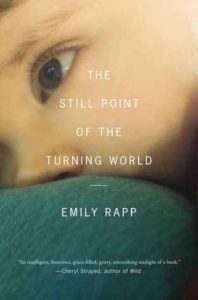 KA: You [Emily] mention in your memoir The Still Point of the Turning World a sort of “deathphobia” in our culture. Do you think this fear of mortality generates a need for stories?
KA: You [Emily] mention in your memoir The Still Point of the Turning World a sort of “deathphobia” in our culture. Do you think this fear of mortality generates a need for stories?
ERB: Yeah. If you’ve been a patient or a doctor, it’s often very divisive in terms of story—you know you go in with a story about your particular experience, and whether or not it’s digested by the person who’s seeing you is another issue. Stories in general about particular types of people in particular bodies have been culturally-shrined—a person with a disability is this, a person with an illness is this. I think medical narratives are designed to be a subversive power against those sanctions. Part of the role of books is to help medical professionals see their patients in a new way. An “ideal” of narrative medicine is that it becomes less about a diagnosis, more about a story.
PM: The scientific approach allows the physician to be supposedly objective and to make decisions based on the medicine, the labs, and the measurements instead of the “unreliable” reporting of the patient. Of course what they miss then is the comment the patient doesn’t share about their life that really impacts their health.
KA: So do you [Juliet] work with patients in writing their own comics?
JM: I’m actually working on a grant and a pilot project with City of Hope where we’re going to bring in artists, and have them work on illness narratives with palliative care cancer patients in a ten-week workshop. I also had my [anthropology] students create comics, and we had them pick stories around their personal illness narratives; they actually wrote out an illness narrative, either their own or a family member’s, and then we created comics from those.
KA: And though it wasn’t written for this purpose, some of your work [Emily] has been taught as a medical narrative?
ERB: Yeah, all of it has. To medical students, disability students, any sort of medical narrative courses.
KA: Do you think when readers approach your memoir as a medical narrative that it changes the reading of your work at all?
ERB: No, not really. Once you start a book, hopefully the storytelling kind of takes over any preconceived ideas you may have about the way it’s classified. In some ways, medical narratives are a way to talk about it [the story] in an academic circle—it allows for diversity in perspective.
KA: And have you heard anything from medical professionals or students about how reading your work has changed their approach to their work?
ERB: I think it’s nice, especially with the narratives about my son, that they see these are not just babies with a diagnosis. [Emily’s son Ronan was diagnosed with and died from Tay-Sachs disease.] They have a family; they’re not a problem. I do think doctors are taught and learn to see patients as a series of problems versus someone with a story. They have so many patients; they can’t always stop for everyone’s story. I think that [narrative medicine] creates empathy and hopefully, when medical professionals meet someone, they have a desire to know more.
PM: I realized after I’d been at Columbia for a little while that part of the reason narrative medicine works as it does, especially with experienced physicians, is it allows them to look at humanity, how people communicate, and how people are in serious situations, without confronting them with their own shortcomings. Doctors are our best and brightest, a lot of the time, but they are also perfectionists; they’re over achievers.
KA: Well I guess they have a lot on the line if they don’t get something right.
PM: Literally life and death situations, and also reputation and career. The way they are trained is so antithetical to a humanistic approach. It’s a scientific, evidence-based approach. The unwritten curriculum is “don’t show any weakness; don’t get too close to the patient because you won’t be objective.” It’s changing in some places, especially with the development of the medical humanities. But you can have a room of doctors in training reading literature and looking at what the characters are doing, and they can be critical of those characters or get insights to those people in the story that are ill without having their ego or profession on the line. And if they do their own reflective writing, they apply the lessons to themselves, and they don’t even know. They’re just writing something because someone told them to, and then they make discoveries.
I don’t think that the role of writing is to create something artistic and beautiful from a very difficult thing. If the end goal is healing, they should go see a psychiatrist.
KA: So a narrative medicine class sounds kind of like a hybrid between a literature class and a creative writing workshop. When you brought this type of practice to a room of medical professionals, what is the kind of response you were met with?
PM: A little bit of skepticism. Because “what’s this got to do with what I do?” I try to preface a workshop with “I know this is going to seem a little unusual.” Part of designing a narrative medicine workshop is picking the right stuff that people will relate to. I had a group of physical therapists read an essay from a patient perspective that was able to represent the usual patient but with the skills of a very accomplished writer, saying what he would really like to happen is for a doctor to talk and listen to him. I had one person say, “I’m embarrassed to say I really forgot about what the patient might want. I’m so focused on what is wrong with the patient and how to fix it.”
KA: What about the writing that comes out of those sessions? If they are skeptical to read something, I imagine they would be more hesitant to put a pen to paper.
PM: It is all over the spectrum. Some people just explode, like you pulled the cork from a shook- up champagne bottle, and all this stuff comes out, and they don’t want to stop writing. Or they’ll write something, and it’s so emotional for them because they’re really connecting with it that they have a hard time reading it out loud. Sometimes, they totally freeze up, because of perfectionism, or they’re not ready to tell that story. Sometimes, glorious and beautiful things are written, and sometimes they aren’t.
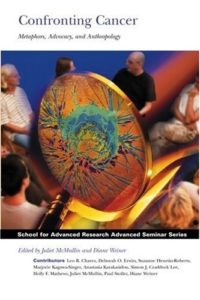 KA: What happens when you [Juliet] train cultural anthropology students in illness narratives?
KA: What happens when you [Juliet] train cultural anthropology students in illness narratives?
JM: I had one student interview a woman who was writing an illness narrative around cancer, and a sense of hope really took over how the student was interpreting the narrative. The woman didn’t have insurance, she’s in the middle of nowhere, she was working a few part time jobs, trying to make ends meet, so when she received her diagnosis she just said, “What’s next?” The student automatically interpreted that as “Well, what’s next; what’re we doing?” But if you look at the context of the woman’s life and pay attention to those details, the “what’s next” means “of course this is what’s happening to me.”
KA: So looking at the details and context beyond the straightforward transcription of the interview brings reality to the narrative—the difficult things we don’t typically talk about.
JM: Yeah. These things are sort of pushed aside, especially when a conversation turns to “hope.”
KA: In your memoir The Still Point of the Turning World you [Emily] said something like you used to believe that writing was not therapy.
ERB: It’s not, it’s not. I [still] believe it isn’t now.
KA: No?
ERB: No, God no. I don’t think that the role of writing is to create something artistic and beautiful from a very difficult thing. If the end goal is healing, they should go see a psychiatrist. That’s not my MO, and I think people who approach subjects thinking it’s going to make them feel better … it’s not.
KA: In the same memoir, there was also one part that said something to the effect of writing would not save Ronan but it might save you. What about writing made you think it could save you?
ERB: I think just the act of doing it, the act of doing something artistic in the face of something really crappy. That’s what was motivating me—creating something, sort of creating order from chaos. The activity of doing for the sake of doing.
KA: So do you think that in reading there can be a sort of healing? So not on the side where you’re writing but–
ERB: I don’t really believe in healing. I think it’s kind of a misnomer. It implies there’s going to be an end time where everything is fine and sealed up, healed. Those things don’t really happen. It just processes a journey that is constantly changing—like, wounds open—so, no. I don’t believe in that. I don’t believe you can heal something, you just have to sort of, like, truck on. You can learn something, but that’s about as far as I go.
KA: Then what are the benefits of making illness and death not private, secret things?
JM: I think there are a lot. One is to bring more people in, be more supportive and create community-building through storytelling. Then people start realizing you’re not the only one, and people care. It’s a community building practice towards more humanistic behaviors, caring behaviors toward each other.
Another benefit [of talking about these topics] is there are other ways of being in the world that you don’t think about—and again, diversity—we start to realize that there is not one way to be human in the world.
KA: You [Emily] said something when you spoke at Antioch in December that stuck with me. You said, “If you have a body, then you have a story.” Lidia Yuknavitch made a similar point at our residency, too. Have you incorporated that idea in teaching your own creative writing classes?
ERB: I have, yeah. I teach a class, a disability and medical narrative kind of combo, and it starts with the question, “What does it mean to be embodied?” So we do a lot of philosophical discussion around ways of knowing, epistemology, what is a body, what does it mean to be a body? Very high language about those types of things to underpin philosophically what we are going to talk about—it starts there. And it’s true that if you read a novel in which you never know where you are in space, or what the person feels inside that body, then that novel sucks.
KA: Right, just floating thoughts.
PM: We’re taught to use “good” literature [in narrative medicine] because—it took me a while to figure out the because—if you have something that’s written well enough, there’s something relatable for anyone. It can’t be too difficult to read, but it can’t be the summertime beach reading list. There needs to be enough substance for people to relate.
ERB: And if you respond to a novel, you’re responding to it in an emotional way, so your emotions are housed in your physical form, and they’re not abstractions.
KA: It seems like in the last five or six years, medicine, literature, and anthropology have all kind of stumbled upon the fact that art can be the best example of a patient experience. In works of literature and art, people put a lot of time into trying to portray their unique bodily experiences. It seems like more fields are starting to recognize, “Hey, we can learn from this art thing.”
JM: Exactly. How much does [a story] have to reflect reality, especially when you’re talking about what things mean to people, and how they’re contextualized in this larger question, “What’s going on in the world, individually, culturally?” It doesn’t have to be a straight interview, verbatim, or something you actually saw. It’s thinking about what the experience means to people’s lives, and how stories allow them to express really hard things, without being so hard about it.
KA: So what are the implications for the writer in this developing field that circulates around reading, writing, and storytelling?
PM: There is a movement underway in medicine about being patient-centered, family-centered. Though it’s not called narrative medicine, it’s saying, “Listen to what the patient wants,” which is kind of the same thing. As the question “How do we become patient-centered” comes up louder and more urgently, I hope writers will be standing there saying, “We have the skills to help you with that.”
It’s such an anti-American thing [to say], ‘We can’t control our futures,’ but we can’t. The sooner we learn that, the better.
KA: I like that you say there have been artist-physicians for a long time, but I guess being a patient hasn’t ever really been looked at like being an artist. You are just kind of on the end of this other interaction where things happen to you, or you are the ball of clay that is molded—
JM: People tell you about your body, what’s going on with your body, what they’re going to do to your body, how you should be in your body.
KA: It’s kind of an art just to have a body, isn’t it?
JM: And who gets to have a body? Right? I think—for me—a lot of this has been around questions of diversity and whose voices we get to hear. I would love to hear and see so many more comics. I’m looking for Pacific Islander texts around this genre and all of the autobiographical illness narratives, and there are so many other cultural reasons why you don’t tell certain stories. Ta-Nehisi Coates’s Between the World and Me is amazing. He says these things about who gets to have a body, and who gets to tell the story.
KA: Do you [Emily] see any implications of the field of narrative medicine for writers, or do you think it’s kind of moving towards a more popular role of the narrative in our culture? Personally, I feel like narratives are everywhere: psychology, medicine, anthropology, performance art …
ERB: I do think it’s going to be something that stays on the radar. I think doctors and patients need it. The older we get, the longer we live, the more life-prolonging things that are a part of our lives, the more that we’re going to need these stories. More people need to be writing about death. Americans don’t like unfixable things, and a lot of things about the body are unfixable, so instead of raging against that, we should unpack it in a different way. That’s going to become increasingly important.
KA: I like that you said, “unpacking.” It seems like a lot of death and not healing and all of those scary aspects of our own bodies are kind of packed away. It comes up in art, but not everyone pursues art, and not everyone is an artist, so if it could come by the way we talk about our bodies or from the people who treat our bodies, it seems like it would spread to a larger group of people.
ERB: Definitely. There’s sort of a prevailing feeling in the U.S.—if you are, like, fit enough and watchful enough, and eat the right stuff, you’ll live forever. And you won’t. (Laughs). I get irritated with people when they’re like, “I’m a vegan,” ’cause I’m like “No, you’re going to die, someday, and maybe you’ll die sooner than you think.” So there is a specific need in the American culture for those kinds of stories to be told.
KA: Yeah, it is so compartmentalized. We will all have someone die in our lives … my family members could die—
ERB: Or you could.
KA: Yeah, or I could. Why is it culturally taboo to say that?
JM: Words are powerful. Words can bring things into being. If you speak it, what are the implications of that, of thinking about someone’s illness? Or death? Sometimes people don’t want to burden their families or others with their story, and what does it mean to put your story out there?
ERB: Yeah, you don’t know when it will happen. You don’t know. It’s such an anti-American thing, “We can’t control our futures,” but we can’t. It’s like the sooner we learn that, the better.
KA: So do you think that what writers in this field, or people interested in narrative medicine, can do is be truthful about our mortality?
ERB: Yeah. I mean, pull back the veil. I collaborated on this book with a doctor who died at thirty-seven—he was writing this book because he was dying. It’s like a primer for how to find meaning in your final days. The man knew more in thirty-seven years than some people do in a lifetime. I think that’s going to continue to be the trend because people are curious even if they are reluctant to seek it out. To some people they think, “Oh it’s really depressing,” and I’m like, “No, it’s not. If I were thirty-seven and dying, this is the fucking book I would read.”

